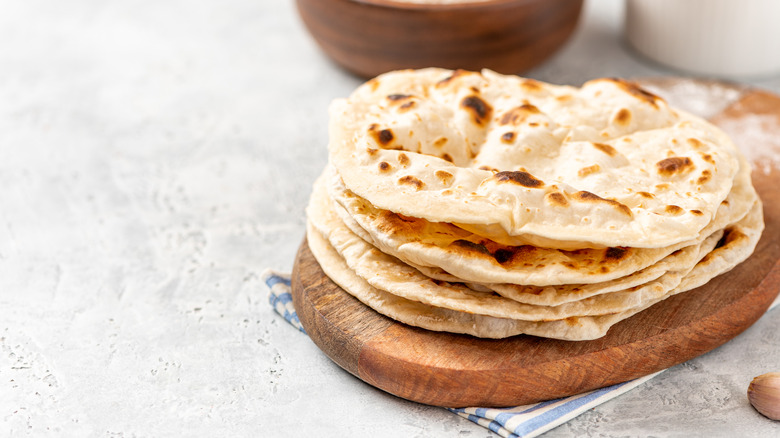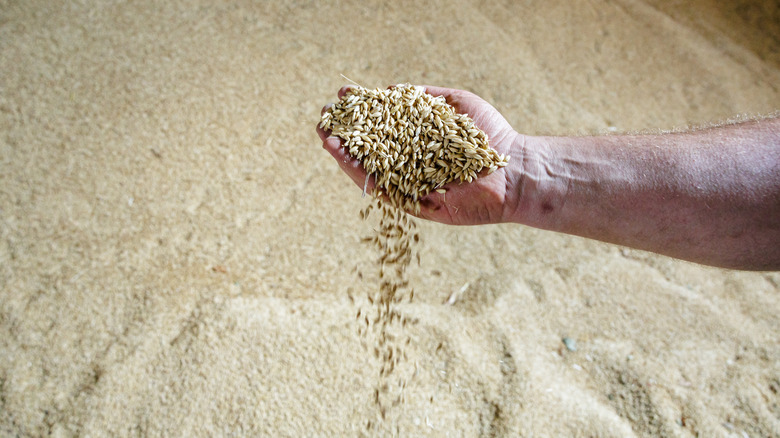Use This Type Of Flour When Making Flatbread
Who doesn't enjoy a nice flatbread? Whether wrapped around a sandwich or used in the place of pizza crust, a good flatbread can satisfy any craving. But, just like baking any other type of bread at home, the simplicity of a flatbread can be challenging to master — especially when you factor in flavor, nutrition, and texture. That's why, in order to achieve a certain outcome, professional and at-home bakers alike often experiment with different types of flour.
From rye flour to whole wheat, rice flour to oat, and cassava flour to chocho, it seems like the options for alternative flours are never-ending. The choice between one or the other is only complicated by the different nutritional benefits and recipe adjustments for each (via Healthline), leaving you with a lot of extra thinking to do. Fortunately, when it comes to baking flatbread, there's only one type of flour you need: barley flour.
Barley flour
Barley, or Hordeum vulgare, a cereal plant from the Poaceae grass family, is an edible grain with a nutty flavor (via Britannica). Like any other flour, flour made from barley is created by grinding the plant's whole grains. However, what makes barley flour different from other types of flour and particularly perfect for flatbreads, is its low protein concentration. As Food Network explains, the lower the protein concentration, the lower the gluten content of the flour — a critical factor in the texture of the end product.
Due to its low protein concentration and, therefore, low gluten content, barley flour won't produce bread with an airy or fluffy consistency — or at least not on its own. For this reason, communities in North Africa, where the grain's cultivation can be traced back as early as 2350 BCE, commonly use the grain to create unleavened flatbreads. The result is a flatbread with a significant variety of health benefits, per the AARP, with an unleavened texture that is similar to a dense cake (via Recipe Tips).

